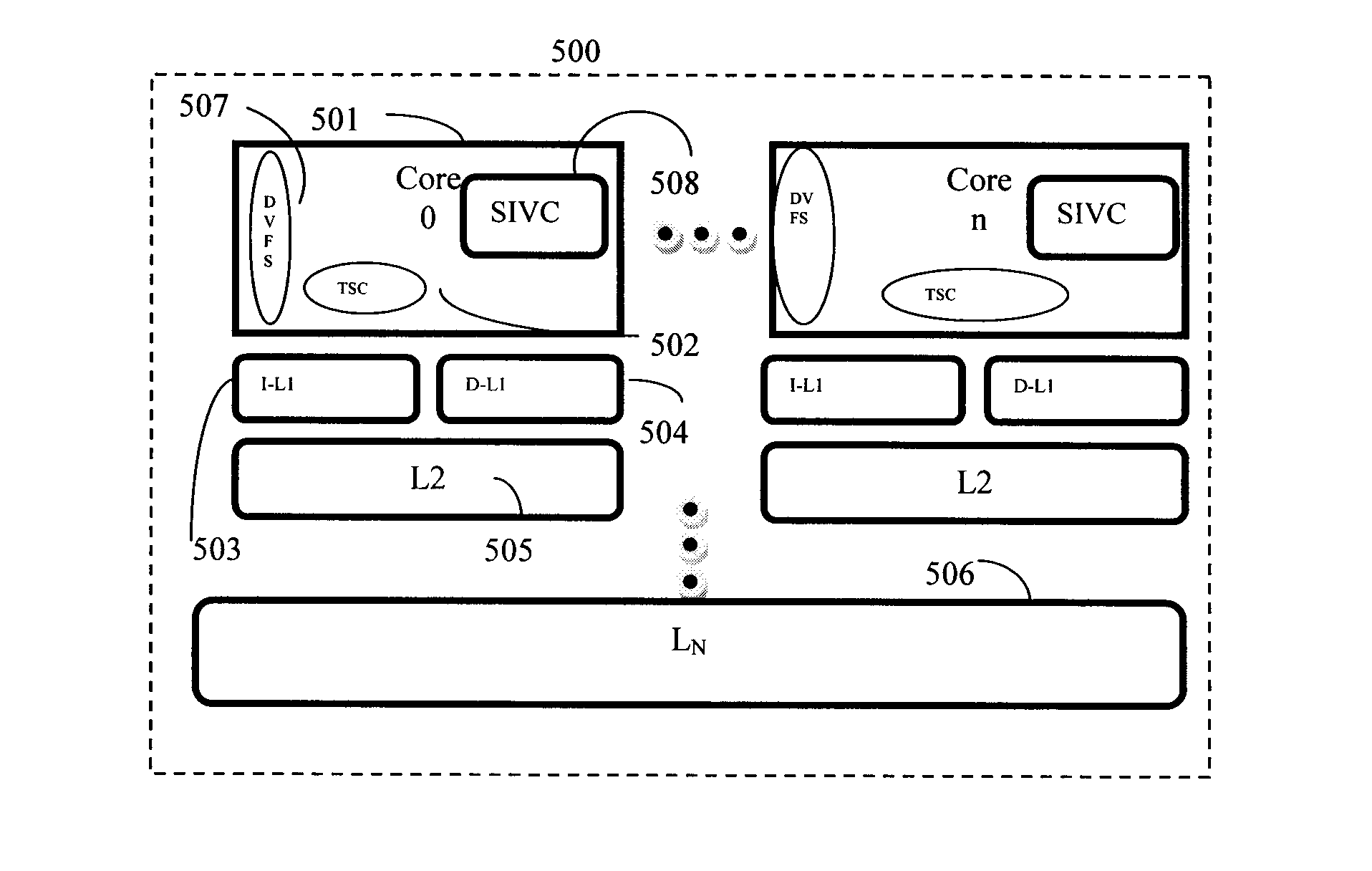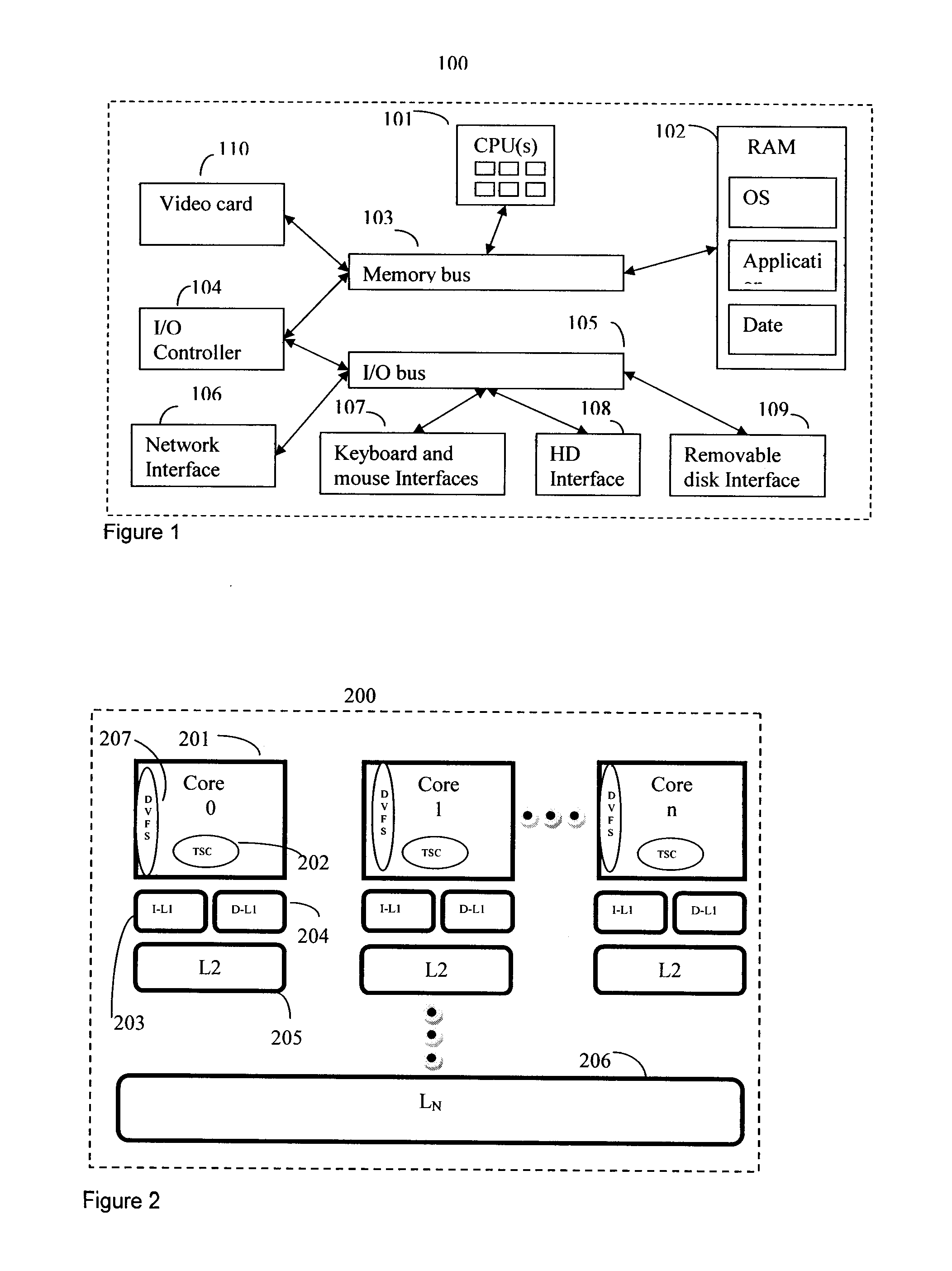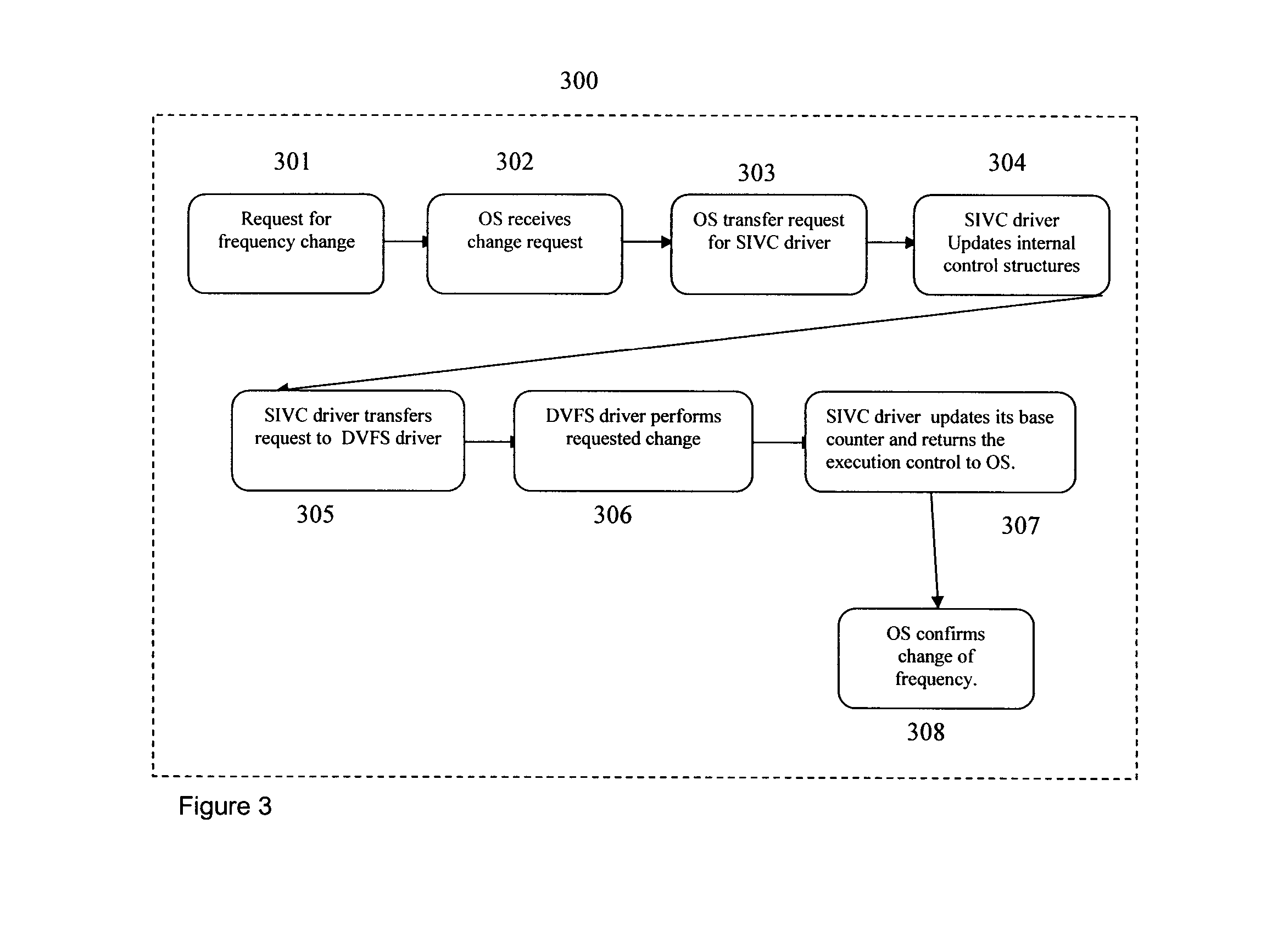Strictly increasing virtual clock for high-precision timing of programs in multiprocessing systems
a multiprocessing system and high-precision technology, applied in the direction of digital data processing details, instruments, electric digital data processing, etc., can solve the problems of complex timekeeping, frequent interruption of programs, and inconvenient measurement of the execution time of computer programs
- Summary
- Abstract
- Description
- Claims
- Application Information
AI Technical Summary
Benefits of technology
Problems solved by technology
Method used
Image
Examples
Embodiment Construction
[0029]The present SIVC method can be implemented in any type of computer system for data processing. An example of computer system and the invention are presented next, where the examples are only illustrative and do not represent any limitation in relation to the type of computer system which can use SIVC method.
[0030]A computer system can be composed of multiple central processing units (CPUs), where each CPU can have multiple processor cores, each of which works independently of each other at an operating frequency F (in Hertz) and cycle time T=1 / F, and has its own clock that is incremented at said frequency F, FIG. 1. The processor cores even if they are in different processing units they can communicate using the shared memory or message passing. Without loss of generality, we can consider such a computer system having only one processing unit with two processor cores and a 3-level cache memory shared between both processor cores.
[0031]In this example, the present SIVC method i...
PUM
 Login to View More
Login to View More Abstract
Description
Claims
Application Information
 Login to View More
Login to View More - R&D
- Intellectual Property
- Life Sciences
- Materials
- Tech Scout
- Unparalleled Data Quality
- Higher Quality Content
- 60% Fewer Hallucinations
Browse by: Latest US Patents, China's latest patents, Technical Efficacy Thesaurus, Application Domain, Technology Topic, Popular Technical Reports.
© 2025 PatSnap. All rights reserved.Legal|Privacy policy|Modern Slavery Act Transparency Statement|Sitemap|About US| Contact US: help@patsnap.com



